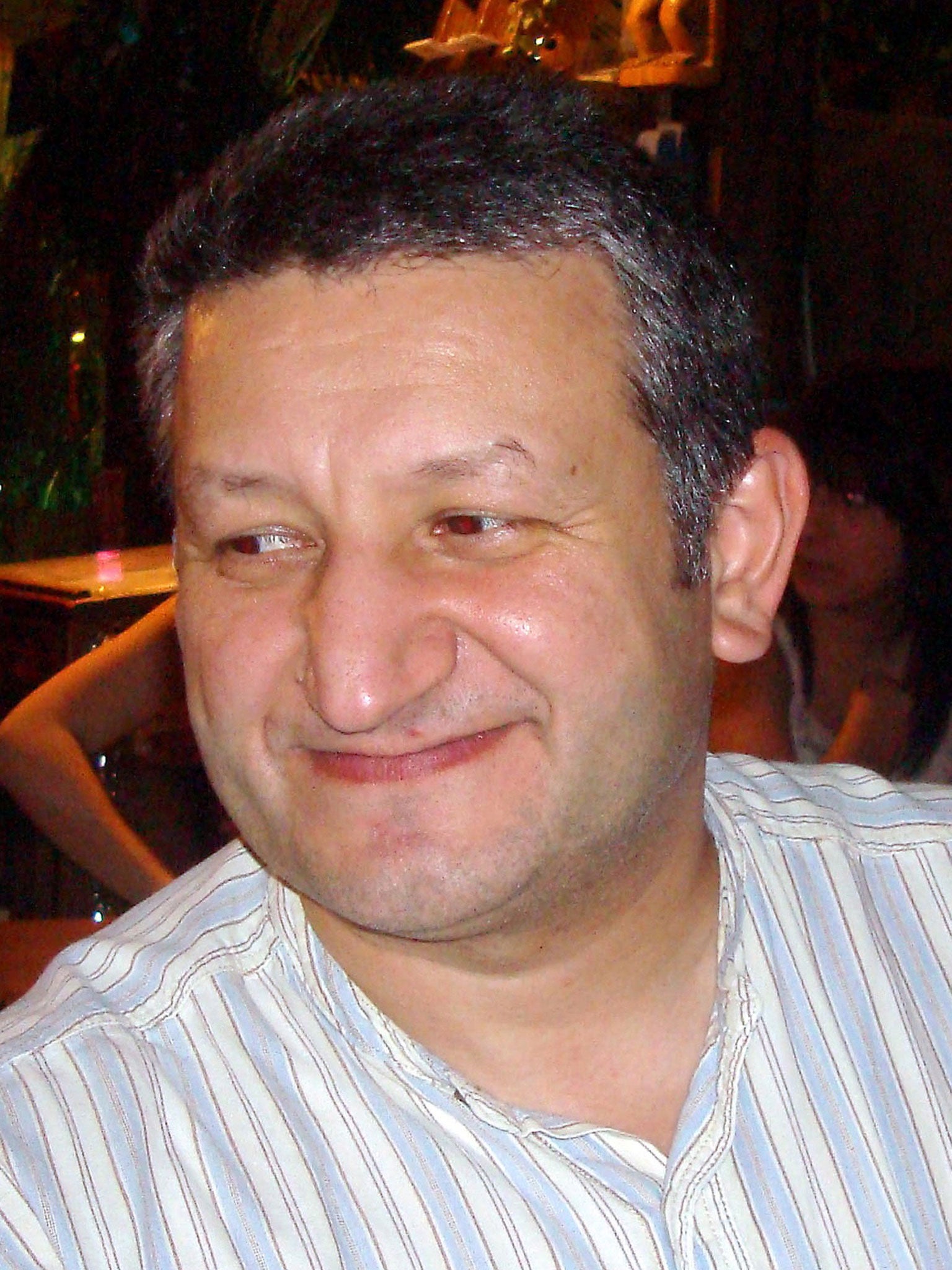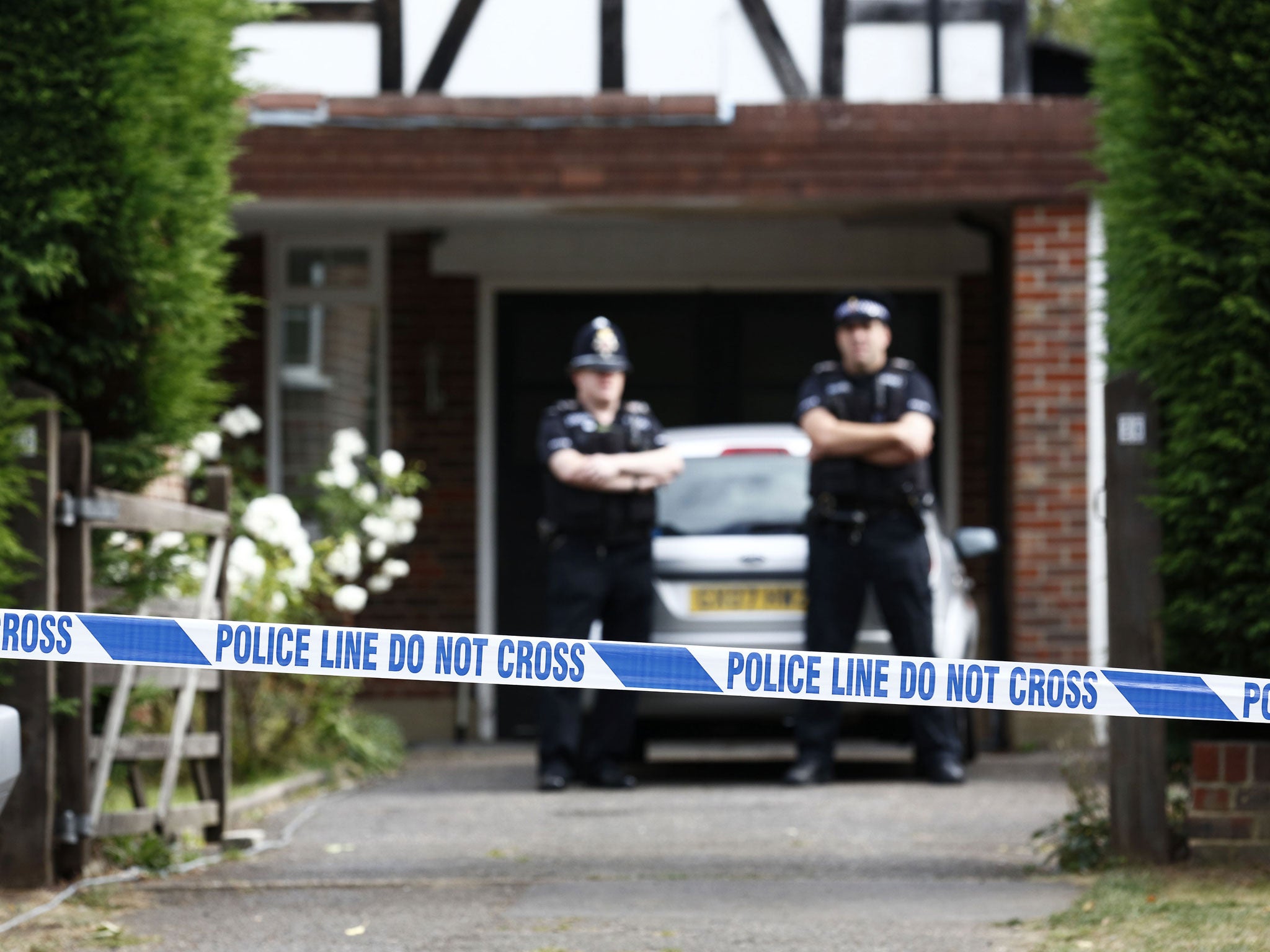A year on at Annecy: The unsolved mystery of the Al-Hilli lay-by murders
A year ago this week, a British-Iraqi family and a passing French cyclist were murdered on a mountain road. John Lichfield separates fact from fiction in Chevaline
At the most infamous lay-by in Europe, all is quietly beautiful.
There are no specks of blood on the fallen leaves, and no gouge marks in the earth where Saad Al-Hilli, wounded and fleeing for his life, reversed his BMW estate car into the mountain side. The river Ire rushes over limestone boulders 50 feet below the road. The forest rises towards the 7,000-foot crest of the Bauges massif. A red and white sign orders the public to drive no further.
Here, a year ago on Thursday, 2,200 feet above Lake Annecy in the French Alps, three members of a British-Iraqi family and a French cyclist were coldly slaughtered. A seven-year-old girl was beaten over the head with the butt of an ancient revolver and left for dead.
Her little sister cowered, and then slept, beneath the skirts of her dead mother in the back of the BMW. She was not discovered by gendarmes for eight hours.
Signs of the crime were still abundant when the forest road was opened to the press in September last year: blood on the leaves, fragments of smashed glass, tyre-marks in the bank. Those signs have washed away long ago but the Al-Hilli massacre remains as much a mystery as ever.
What kind of fury – fraternal hatred, dark politics or pure lunacy – motivated such savagery beside the river Ire?
In the absence of official progress, lurid theories breed on the internet and in the tabloid press. The killings have variously been ascribed to the SAS, the CIA, Israeli intelligence, Iraqi agents, Saddam Hussein loyalists, a gang of professional killers from Eastern Europe and a jealous lover (targeting the French cyclist).
French investigators, working in a joint European investigation team with Surrey police, believed from the outset that the explanation would eventually be found in Britain. For a few months, they appeared side-tracked by another theory: that the murders might have been committed by a lone, local psychopath. That theory has been dropped, for now.
Two months ago, at the request of French investigators, Surrey police arrested Saad Al Hilli’s brother, Zaid, on suspicion of organising the murder to resolve brutally a dispute over their father’s will. After a couple of days, he was released on bail. He adamantly denies that he had anything to do with the quadruple murder. The investigators admit that they do not have enough evidence to charge him.
The Independent understands that French investigators and Surrey police will give a joint press conference in Annecy next Friday, the day after the anniversary. They will probably have little new to say. The intention is to go over the established facts and to squash some of the wilder theories.

The intention of this article is also to try to separate fact and reasonable supposition from myth, speculation and pure invention. The article is based on official statements, reliable leaks from the investigation, including the forensic examination of the crime scene, the fragmentary evidence given to police by Zainab Al-Hilli, now aged 8, and the BBC interview given by Brett Martin, the former RAF pilot who stumbled on the massacre a year ago next week.
The word “remote” has often been used to describe Le Martinet, the parting of mountain tracks where the Al-Hilli family and Sylvain Mollier died. In the space of a short return to the scene of the crime, The Independent ran into six ramblers, four of them children, two cyclists and three cars.
Le Martinet is an isolated spot, but not truly a remote spot. Germaine, who lives in Chevaline in the valley below, makes a pilgrimage each month with a few friends. “We pray for the children but most of all we pray for those poor people who were taken away so cruelly and so suddenly,” she said. Germaine is 80 years old. She makes the four-kilometre trip on foot.
A year ago, the Al-Hilli family came from Claygate in Surrey to the shores of Lake Annecy on a caravan holiday. On the afternoon of 5 September, a grey and drizzly day, they set out for a drive.
In the wine-coloured BMW estate car, were Saad al-Hilli, 50, an Iraqi-born micro-satellite engineer, his wife, Iqbal, 47, a dentist, and her mother Suhaila al-Allaf, 74. There were also two little girls, Zainab and Zeena Al-Hilli, aged seven and four. They were wearing smart “city clothes”.
What brought them to the forest lay-by at Le Martinet is unclear. Zainab, now recovered largely from her injuries, told investigators recently that her father had decided to “go for a walk”.
Dated and timed photographs found in the camera of Zainab’s granny, Ms Al-Allaf, show the family posing happily in Doussard, the next village to Chevaline, at 3.15 pm that day. The murders are believed to have occurred at about 3.35pm to 3.40pm. A direct drive between the two spots takes about 12 minutes.
Saad Al-Hilli parked the BMW in the lay-by with its front bumper towards the steep bank. He and Zainab alone got out of the car.
At that point, Sylvain Mollier, 45, a local man, came up the hill on his €5,000 top-of-the-range racing bicycle. He had passed Brett Martin, also cycling, at the foot of the road to the lay-by at 3.15pm. It would take a good cyclist around 15 to 20 minutes to climb the steep and pitted road up to Le Martinet.
Saad Al-Hilli, Mollier and Zainab are believed to have been standing close together when a gunman appeared on foot from around the gentle bend beyond the lay-by. How the lone gunman came to be there is one of the great unresolved mysteries of the case. Had he followed the Al-Hillis on the large motorcycle which was seen on the tracks banned to the public beyond Le Martinet later that afternoon?
No one saw a motorcycle following the Al-Hilli car. Unless the gunman was a random killer, it seems inconceivable that he could have been lying in wait.

The gunman opened fire rather wildly at first. Zainab was wounded in the shoulder. Mollier was also wounded and fell to the ground.
Saad Al-Hilli fled to his car, trying to drag Zainab with him. As he got into the driver’s seat, he was shot in his lower back. He reversed the BMW in a half-circle, accidentally dragging Sylvain Mollier under his wheels. In his panic, Saad reversed too far and jammed his rear wheels into the soft earth of the forest side.
The gunman shot the three adult occupants of the car through the front wind-screen, carefully placing two bullets in each head. He failed to see little Zeena hiding under her mother’s knees.
He returned to Sylvain Mollier and shot him several more times as he lay on the ground. He grabbed Zainab, who had remained outside the car, but did not shoot her. He beat her savagely with the handle of his revolver and left her for dead.
When Brett Martin reached the scene at around 3.40pm, he found Zainab staggering near the car. He found the BMW with its engine running and its wheels still spinning as it reversed into the bank. After placing Zainab in a recovery position, saving her life, he found a group of French walkers who raised the alarm at 3.48pm.
Why did the gunman not shoot Zainab? Had he run out of ammunition? Or had his gun jammed? He fired 25 shots and must have re-loaded at least twice.
Fragments of the wooden handle of the gun were found by forensic experts on the ground. As a result, the type of gun used has been identified as a 7.65mm P06 Luger – an ancient weapon issued to the Swiss army and police in the 1920s and 1930s.
This is an antique, a collector’s item – a bizarre weapon for a professional killer. The behaviour of the gunman was equally odd: a mixture of clinical cynicism and muddled panic. Hence the decision by the French investigators to explore the “lone nut” angle. Their inquiries went nowhere.
In recent months, the investigators have returned to the theory of a targeted attack on the Al-Hillis. Eric Maillaud, the Annecy prosecutor who is the spokesman for the investigation, has speculated that the killer might have been a “low-price” assassin from the Balkans.
The possibility that the murderer targeted Sylvain Mollier, not the Al-Hillis, has been “98 per cent” dismissed, according to Mr Maillaud. Mollier was a foreman welder in a local plant supplying metal to the nuclear industry – not a “nuclear scientist” as claimed in some reports. He had no enemies. He was on a random cycle ride and had not been that way before. Brett Martin saw no car or motorbike following him.
Surrey Police, as their part of the investigation, recently uncovered the fact that Saad Al-Hilli’s older brother, Zaid, 54, had made many phone calls to five numbers in Romania just before the killings. After the killings, the calls stopped. Mr Maillaud has played down the importance of these calls. They seem, nonetheless, to have led to the decision to arrest Mr Al-Hilli in June.
French investigators have long been frustrated that British police could not place Zaid Al-Hilli in custody for a lengthy grilling. The two brothers are known to have been in an acrimonious dispute over their father’s inheritance, including a bank account in Geneva containing €800,000. Under the French judicial system, investigators could have held Zaid for many days to search for proof. Under the British system, the police have to have elementary proof before they can justify an arrest.
Overall, Franco-British cooperation on the case has been excellent. Not so the cooperation from other countries.In almost a year, the Iraqis have not replied to any official correspondence from France. The Romanians have failed to identify the numbers telephoned by Mr Al-Hilli. The United States has refused to order the release of Saad Al-Hilli’s computer files,.
Public interest in the killings remains huge but understanding has often been confused by far-fetched theories. In France, once an investigation is handed to an examining magistrate, even basic facts are not supposed to be divulged.
Since the media detests a news vacuum, there are inevitably leaks. Some are genuine; other less so. Some of the leaks to the French media are reported responsibly in the British press. Some are “spun” out of recognition.
After twelve months the central mysteries of the Al-Hilli murders remain. The most likely explanations are the most banal ones: the family quarrel or the lone nut.
Whatever way the jigsaw puzzle is put together, there are still important pieces which do not fit.
Join our commenting forum
Join thought-provoking conversations, follow other Independent readers and see their replies
Comments